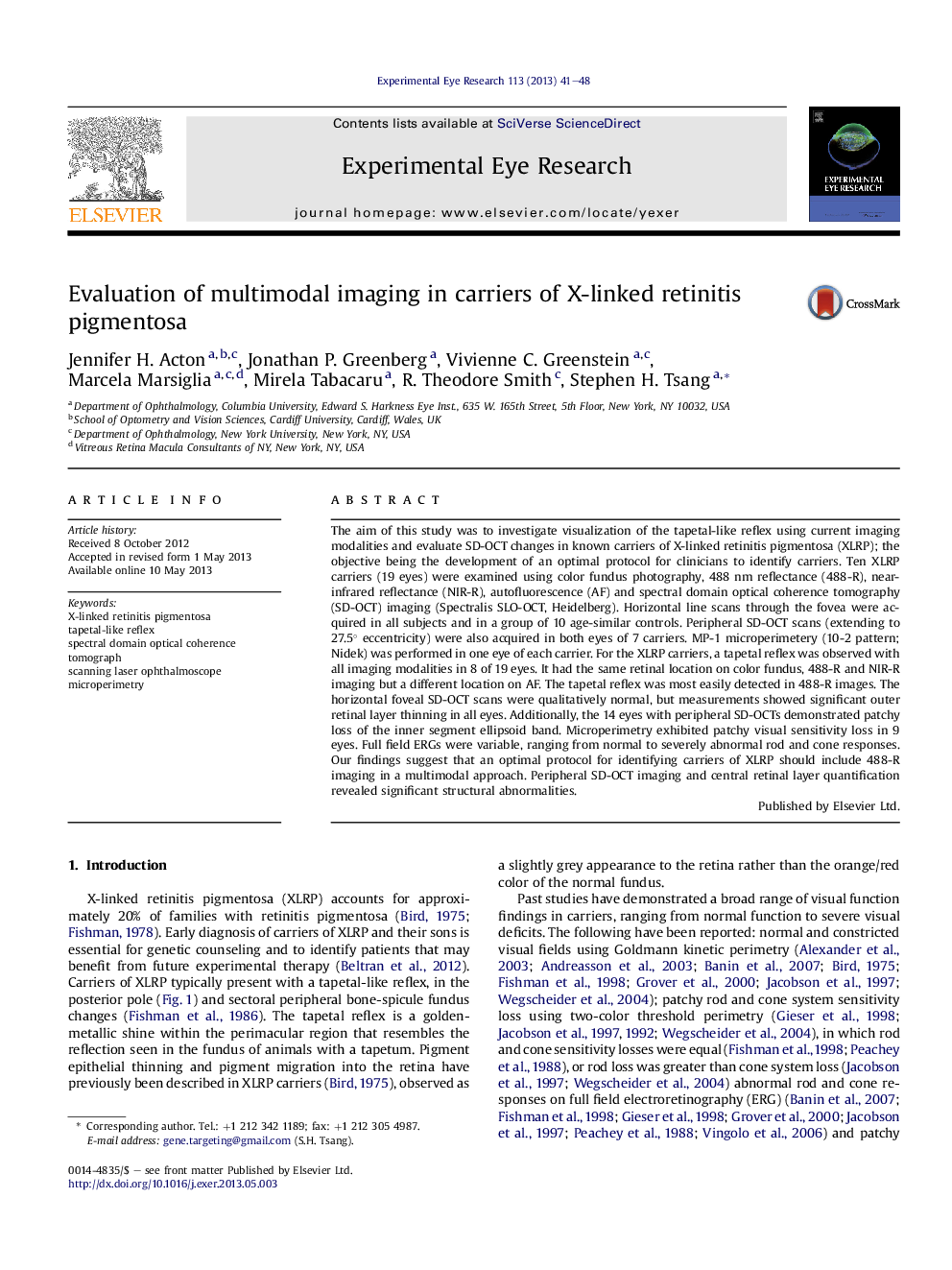| Article ID | Journal | Published Year | Pages | File Type |
|---|---|---|---|---|
| 6197258 | Experimental Eye Research | 2013 | 8 Pages |
â¢The tapetal-like reflex in XLRP carriers was imaged using current imaging modalities.â¢Visibility was optimal in 488 nm reflectance images.â¢Central SD-OCT scans showed significant outer retinal layer thinning.â¢Peripheral SD-OCT imaging demonstrated patchy loss of the inner segment ellipsoid band.â¢Optimal clinical protocol for identifying carriers of XLRP should include 488-R imaging.
The aim of this study was to investigate visualization of the tapetal-like reflex using current imaging modalities and evaluate SD-OCT changes in known carriers of X-linked retinitis pigmentosa (XLRP); the objective being the development of an optimal protocol for clinicians to identify carriers. Ten XLRP carriers (19 eyes) were examined using color fundus photography, 488 nm reflectance (488-R), near-infrared reflectance (NIR-R), autofluorescence (AF) and spectral domain optical coherence tomography (SD-OCT) imaging (Spectralis SLO-OCT, Heidelberg). Horizontal line scans through the fovea were acquired in all subjects and in a group of 10 age-similar controls. Peripheral SD-OCT scans (extending to 27.5° eccentricity) were also acquired in both eyes of 7 carriers. MP-1 microperimetery (10-2 pattern; Nidek) was performed in one eye of each carrier. For the XLRP carriers, a tapetal reflex was observed with all imaging modalities in 8 of 19 eyes. It had the same retinal location on color fundus, 488-R and NIR-R imaging but a different location on AF. The tapetal reflex was most easily detected in 488-R images. The horizontal foveal SD-OCT scans were qualitatively normal, but measurements showed significant outer retinal layer thinning in all eyes. Additionally, the 14 eyes with peripheral SD-OCTs demonstrated patchy loss of the inner segment ellipsoid band. Microperimetry exhibited patchy visual sensitivity loss in 9 eyes. Full field ERGs were variable, ranging from normal to severely abnormal rod and cone responses. Our findings suggest that an optimal protocol for identifying carriers of XLRP should include 488-R imaging in a multimodal approach. Peripheral SD-OCT imaging and central retinal layer quantification revealed significant structural abnormalities.
